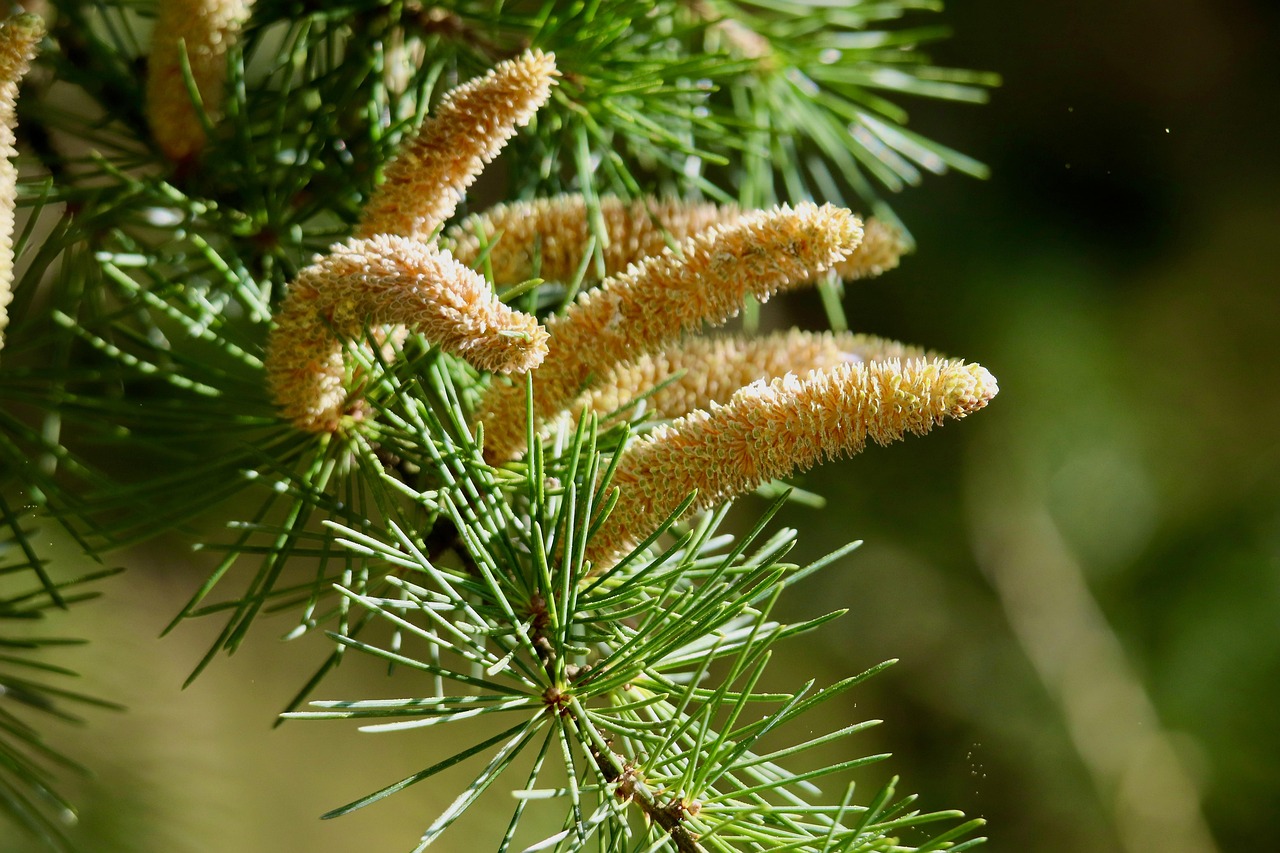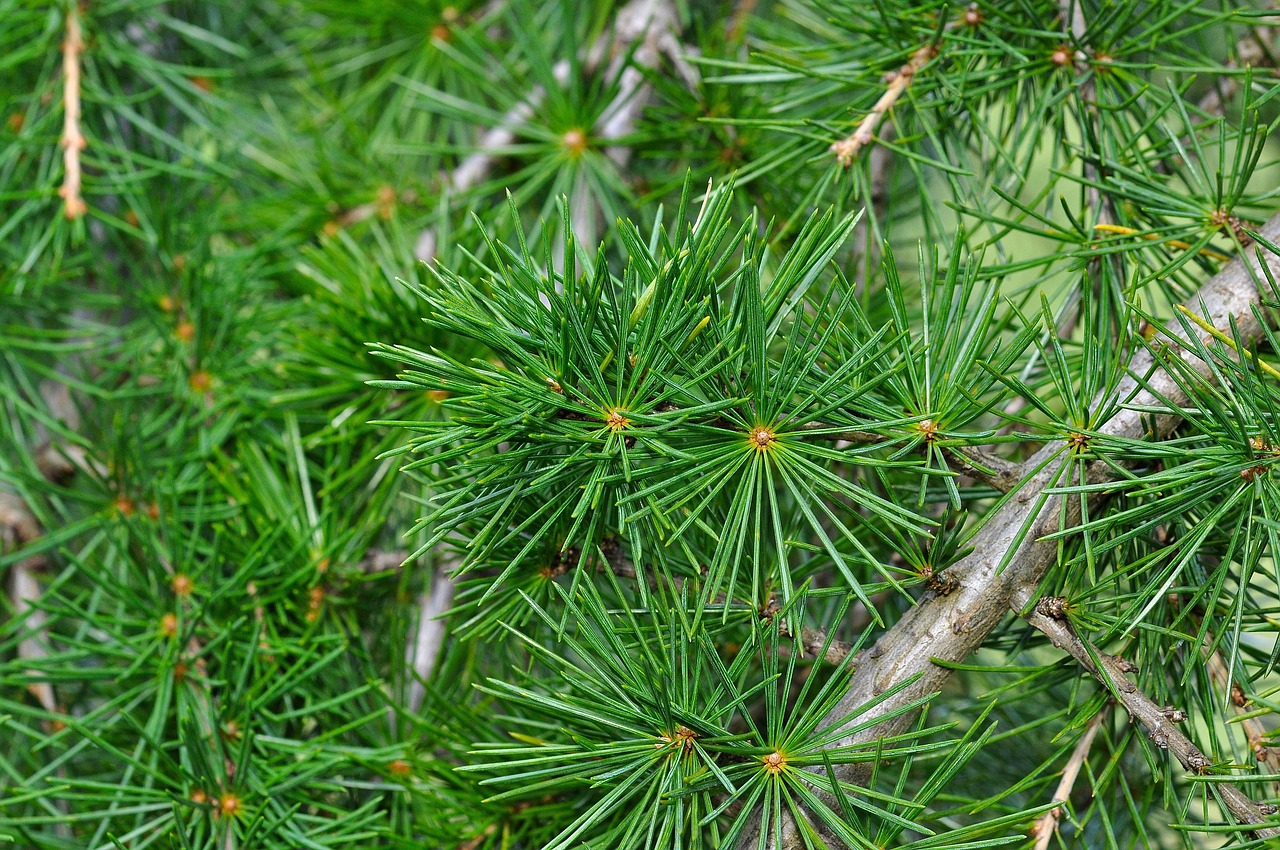Cedar trees are known for their moderate to fast growth rates, typically ranging from 12 to 24 inches per year, depending on the species and environmental conditions. They provide numerous environmental benefits, including carbon sequestration, soil erosion prevention, and habitat creation for wildlife.
Cedar trees belong to the family of conifers and are characterized by their aromatic wood and evergreen foliage. The most commonly recognized species include the Eastern Red Cedar, Western Red Cedar, and Atlas Cedar. These trees thrive in various environments, from dry mountainous regions to more humid areas. Their adaptability contributes to their popularity in landscaping and forestry.

The growth rate of cedar trees can vary significantly based on several factors, including soil quality, moisture availability, sunlight exposure, and climatic conditions. Generally, cedar trees grow faster in well-drained soils that are rich in organic matter. They require full sun for optimal growth, making them suitable for open spaces.
Growth Rates of Different Cedar Species
Here is a brief overview of the growth rates for some common species of cedar trees:
| Cedar Species | Average Growth Rate (inches/year) | Maximum Height (feet) |
|---|---|---|
| Eastern Red Cedar | 12-24 | 40-50 |
| Western Red Cedar | 24-36 | 150-200 |
| Atlas Cedar | 12-24 | 60-80 |
The Western Red Cedar is particularly notable for its rapid growth and towering height. It can reach heights of over 150 feet in optimal conditions. This species is often used in construction due to its durability and resistance to decay.

Cedar trees also play a significant role in the environment. They contribute to biodiversity by providing habitat for various wildlife species. Birds, small mammals, and insects rely on cedar trees for shelter and food sources. The dense foliage offers nesting sites, while the seeds provide nourishment during colder months.
In addition to supporting wildlife, cedar trees are effective at sequestering carbon dioxide. As they grow, they absorb CO2 from the atmosphere, helping to mitigate climate change. This process not only helps reduce greenhouse gases but also enhances air quality by producing oxygen.
Environmental Benefits of Cedar Trees
Cedar trees offer several environmental benefits beyond their growth rates. The following are some key advantages:

- Soil Erosion Control: The extensive root systems of cedar trees stabilize soil and prevent erosion. They are particularly useful in hilly or mountainous regions.
- Water Conservation: Cedar trees help improve water retention in the soil. Their presence can reduce runoff and promote groundwater recharge.
- Biodiversity Enhancement: The diverse ecosystem supported by cedar trees encourages a wide variety of plants and animals to thrive.
- Aesthetic Appeal: Cedar trees are visually appealing and often used in landscaping designs. Their unique foliage and structure enhance any outdoor space.
The health benefits associated with cedar wood should not be overlooked. The natural oils found in cedar wood have been known to repel insects and fungi. This property makes cedar a preferred choice for outdoor furniture and structures, reducing the need for chemical treatments.
Cedar trees also contribute to the overall health of forest ecosystems. As they grow, they create a microclimate that can benefit understory plants by providing shade and humidity. This nurturing environment helps maintain ecological balance within forested areas.
In summary, understanding the growth rates and environmental benefits of cedar trees highlights their importance in both urban and natural settings. Their rapid growth, coupled with their ecological contributions, makes them a valuable asset to our environment.
Factors Influencing Cedar Tree Growth
The growth rate of cedar trees is influenced by several environmental and biological factors. Understanding these factors can help in cultivating healthy trees and maximizing their growth potential. Below are some of the primary factors affecting cedar tree growth:

- Soil Quality: Cedar trees prefer well-drained, loamy soils rich in organic matter. Poor soil conditions can significantly hinder growth.
- Water Availability: Adequate moisture is crucial for cedar trees. While they can tolerate drought, consistent watering during dry spells promotes faster growth.
- Sunlight Exposure: Cedar trees thrive in full sun. Insufficient sunlight can stunt their growth and lead to a weakened structure.
- Temperature Variations: Different species of cedar trees have varying temperature tolerances. Understanding the local climate is essential for successful planting.
Soil Requirements
The type of soil in which cedar trees are planted plays a crucial role in their growth. Ideally, cedar trees prefer:
- Well-drained soils to prevent root rot.
- Soils with a pH level ranging from 6.0 to 7.5.
- Organic matter that enhances nutrient availability.
When planting cedar trees, it is advisable to perform a soil test to determine its pH and nutrient content. Amendments may be necessary to create the optimal growing conditions.
Watering Needs
Cedar trees have moderate water requirements. Newly planted saplings need regular watering to establish their root systems. However, once established, they become more drought-resistant. Here are some tips for watering cedar trees:
- Water deeply but infrequently to encourage deep root growth.
- Avoid waterlogging, as it can lead to root diseases.
- During extended dry periods, provide supplemental irrigation to young trees.
Pests and Diseases Affecting Cedar Trees
Cedar trees, while relatively resilient, can be susceptible to various pests and diseases that can affect their growth and health. Understanding these threats is vital for maintaining healthy trees.
Common Pests
Some common pests that affect cedar trees include:
- Cedar Bark Beetles: These pests can bore into the bark, disrupting the flow of nutrients.
- Aphids: These tiny insects suck sap from the leaves, leading to yellowing foliage.
- Caterpillars: Various caterpillar species can defoliate cedar trees if present in large numbers.
Diseases
Cedar trees may also face diseases such as:
- Cedar Apple Rust: A fungal disease that affects both cedar and apple trees, causing galls on branches.
- Root Rot: Often caused by overwatering or poorly drained soil, leading to tree decline.
Regular monitoring and maintaining good cultural practices can help prevent these issues. Applying appropriate treatments when pests or diseases are detected is essential for protecting cedar trees.
The Role of Cedar Trees in Urban Environments
Cedar trees are increasingly popular in urban landscaping due to their numerous benefits. They provide not only aesthetic appeal but also functional advantages in city settings. Here are some key roles they play:
- Aesthetic Value: Cedar trees add beauty and greenery to urban landscapes, enhancing the visual appeal of neighborhoods.
- Air Quality Improvement: By absorbing pollutants and producing oxygen, cedar trees contribute to cleaner air in densely populated areas.
- Noise Reduction: Their dense foliage can act as a sound barrier, helping to reduce noise pollution from traffic and construction.
- Shade Provision: Cedar trees provide shade, which can help lower temperatures in urban areas, contributing to energy savings during hot months.
The incorporation of cedar trees into urban planning can lead to more sustainable and livable environments. As cities continue to grow, the importance of green spaces cannot be overstated.
By understanding the various factors influencing the growth of cedar trees and their benefits, it becomes clear how valuable these trees are in both natural and urban settings. Their adaptability and ecological contributions make them a worthy consideration for any planting project.
Cedar Trees in Landscaping and Design
Cedar trees are a popular choice in landscaping and garden design due to their versatility and aesthetic appeal. Their unique characteristics make them suitable for various applications, from residential gardens to public parks. Below are several ways cedar trees can enhance outdoor spaces.
Design Applications
Cedar trees can be incorporated into landscaping designs in multiple ways:
- Specimen Trees: Their striking form and height make them ideal as focal points in gardens.
- Hedges and Screens: Dense foliage provides privacy and can serve as natural barriers against wind and noise.
- Shade Trees: Their broad canopies offer shade, making outdoor spaces more comfortable during hot weather.
- Wildlife Gardens: Cedar trees attract birds and beneficial insects, enhancing biodiversity in garden settings.
When planning a landscape, it is essential to consider the specific species of cedar tree, as their growth habits and sizes can vary significantly. This ensures that they fit well within the overall design of the space.
Seasonal Interest
Cedar trees add visual interest throughout the seasons. Their evergreen nature means they retain their foliage year-round, providing consistent greenery even in winter. Additionally, many cedar species display attractive bark textures and colors that enhance their appeal. Here’s how they contribute to seasonal aesthetics:
- Spring: New growth emerges, adding fresh green hues to the landscape.
- Summer: Dense foliage offers a lush backdrop for flowering plants.
- Fall: Some cedar varieties exhibit stunning fall coloration, creating visual contrast.
- Winter: Their evergreen structure adds a sense of life to otherwise bare landscapes.
Cedar Trees and Climate Adaptability
Cedar trees demonstrate remarkable adaptability to various climates and environmental conditions. Understanding their resilience can help in selecting the right species for specific regions.
Hardiness Zones
Cedar trees can thrive in a variety of hardiness zones. Here are some common species along with their respective hardiness zones:
| Cedar Species | Hardiness Zone | Notes |
|---|---|---|
| Eastern Red Cedar | Zones 2-9 | Highly adaptable; tolerates poor soil conditions. |
| Western Red Cedar | Zones 5-7 | Prefers moist, well-drained soils; thrives in coastal areas. |
| Atlas Cedar | Zones 6-9 | Tolerates drought once established; prefers well-drained soils. |
Selecting the appropriate cedar species based on hardiness zones ensures better growth and health for the trees. This consideration is especially important for regions with extreme weather conditions.
Drought Tolerance
Many cedar trees exhibit good drought tolerance once they are established. This characteristic makes them suitable for xeriscaping, a landscaping method that conserves water. Here are some benefits related to drought tolerance:
- Lower Water Demand: Cedar trees require less water once their root systems are developed, making them ideal for dry climates.
- Sustainability: Using drought-tolerant species promotes sustainable landscaping practices by reducing irrigation needs.
- Soil Health: Their deep root systems help improve soil structure and moisture retention.
Cedar Tree Care and Maintenance
Caring for cedar trees involves several essential practices to ensure their health and longevity. By following these guidelines, homeowners and landscape professionals can maintain thriving cedar specimens.
Pruning Techniques
Regular pruning is vital for promoting healthy growth in cedar trees. Proper techniques include:
- Removing Dead or Diseased Wood: Regularly inspect for and remove any dead branches to prevent disease spread.
- Shaping the Tree: Prune to maintain a desired shape while ensuring adequate light penetration for inner foliage.
- Avoiding Over-Pruning: Cedar trees generally require minimal pruning; excessive cutting can stress the tree.
Nutrient Requirements
Cedar trees benefit from regular fertilization to support healthy growth. Here are some tips regarding nutrient management:
- Soil Testing: Conduct soil tests to determine nutrient levels and pH balance before applying fertilizers.
- Organic Fertilizers: Consider using organic options like compost or well-rotted manure to improve soil health naturally.
- Timing of Application: Apply fertilizers in early spring to support new growth.
By implementing these care practices, cedar trees can flourish, contributing to both aesthetic beauty and environmental benefits in their surroundings.
Additional Environmental Impacts of Cedar Trees
Cedar trees have a significant impact on their surrounding environment, extending beyond their role in landscaping and urban settings. Their ecological contributions are vital for maintaining healthy ecosystems. Here are some additional environmental benefits provided by cedar trees:
Carbon Sequestration
Cedar trees play a crucial role in carbon sequestration, helping to mitigate climate change. Through photosynthesis, they absorb carbon dioxide from the atmosphere and store it in their biomass. This process not only reduces greenhouse gas levels but also contributes to the overall health of the environment. The ability of cedar trees to sequester carbon varies by species, age, and size.
Soil Health Improvement
The presence of cedar trees contributes to improved soil health. Their leaf litter adds organic matter to the soil, enhancing its structure and nutrient content. This organic matter supports microbial activity, which is essential for nutrient cycling. Additionally, the deep root systems of cedar trees help aerate the soil, promoting better drainage and water retention.
Windbreaks and Microclimates
Cedar trees are often used as windbreaks in agricultural settings. They can reduce wind speeds, protecting crops and livestock from harsh weather conditions. Furthermore, their presence can create microclimates that benefit other plants and animals. The shade provided by cedar trees can help lower temperatures in surrounding areas, creating a more hospitable environment for other species.
Challenges Facing Cedar Trees
While cedar trees offer numerous benefits, they also face various challenges that may affect their growth and health. Understanding these challenges is essential for effective management:
- Climate Change: Changes in temperature and precipitation patterns can impact cedar tree growth and survival rates. Increased frequency of extreme weather events may also pose risks.
- Pest Infestations: As mentioned earlier, cedar trees are susceptible to pests like bark beetles and aphids. Monitoring and managing these infestations is crucial for tree health.
- Disease Outbreaks: Fungal diseases can threaten cedar populations. Early detection and management practices are necessary to prevent widespread damage.
- Urban Development: Increasing urbanization can lead to habitat loss for cedar trees. Protecting existing cedar habitats is essential for preserving their populations.
Community Engagement and Education
Promoting awareness about the importance of cedar trees can foster community engagement in conservation efforts. Educational programs can highlight the ecological benefits of cedar trees and encourage local planting initiatives. Here are some ways communities can get involved:
- Tree Planting Events: Organizing community tree planting events can help increase local cedar populations while promoting environmental stewardship.
- Workshops: Hosting workshops on the care and maintenance of cedar trees can educate homeowners and landscapers about best practices.
- School Programs: Engaging schools in educational programs about the environmental benefits of cedar trees can inspire the next generation to appreciate and protect nature.
Final Thoughts
Cedar trees stand out as remarkable species that offer both aesthetic and environmental benefits. Their moderate to fast growth rates make them an excellent choice for various landscapes, while their ecological contributions play a vital role in supporting healthy ecosystems. By understanding the factors that influence their growth, caring for them properly, and recognizing their environmental significance, individuals and communities can enhance both their surroundings and the planet.
As we face growing environmental challenges, incorporating cedar trees into urban planning, agricultural practices, and landscape designs becomes increasingly important. Their ability to adapt to different climates, improve air quality, conserve water, and provide habitats ensures that they remain valuable assets. By engaging in community efforts to plant and protect cedar trees, we take meaningful steps toward fostering a healthier environment for future generations.
The journey of appreciating and nurturing cedar trees emphasizes not only their beauty but also our collective responsibility to safeguard our natural heritage. Whether in urban areas or natural forests, the presence of cedar trees enriches our lives and underscores the interconnectedness of all living things.
